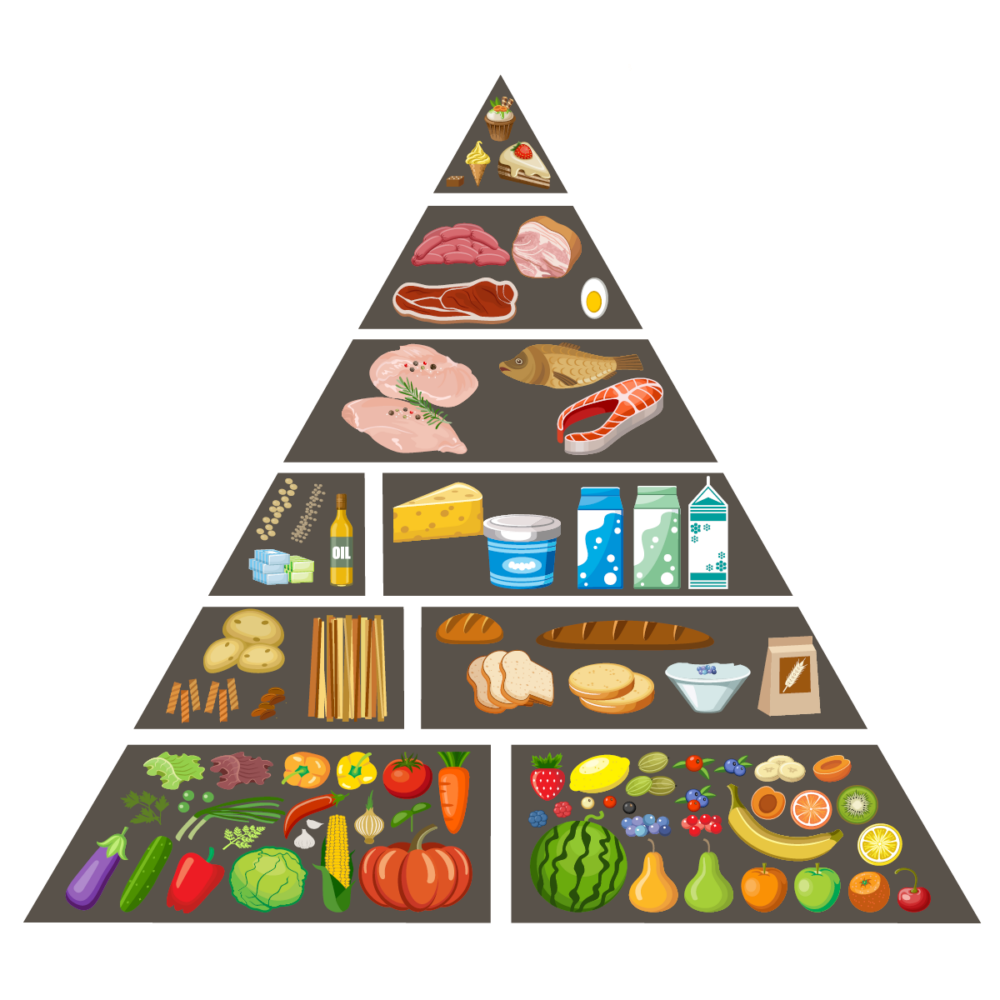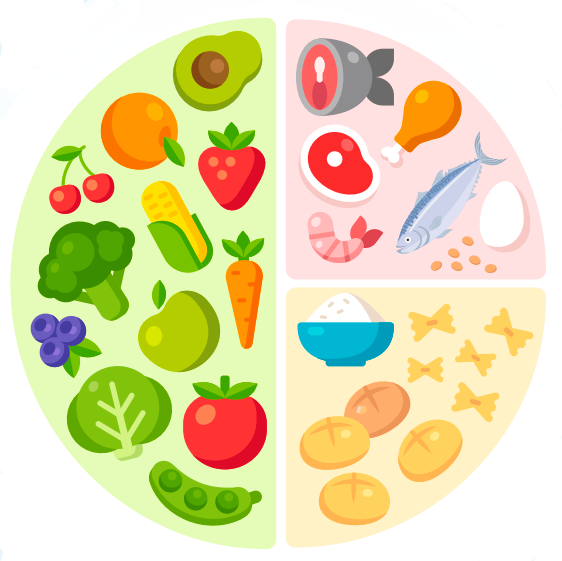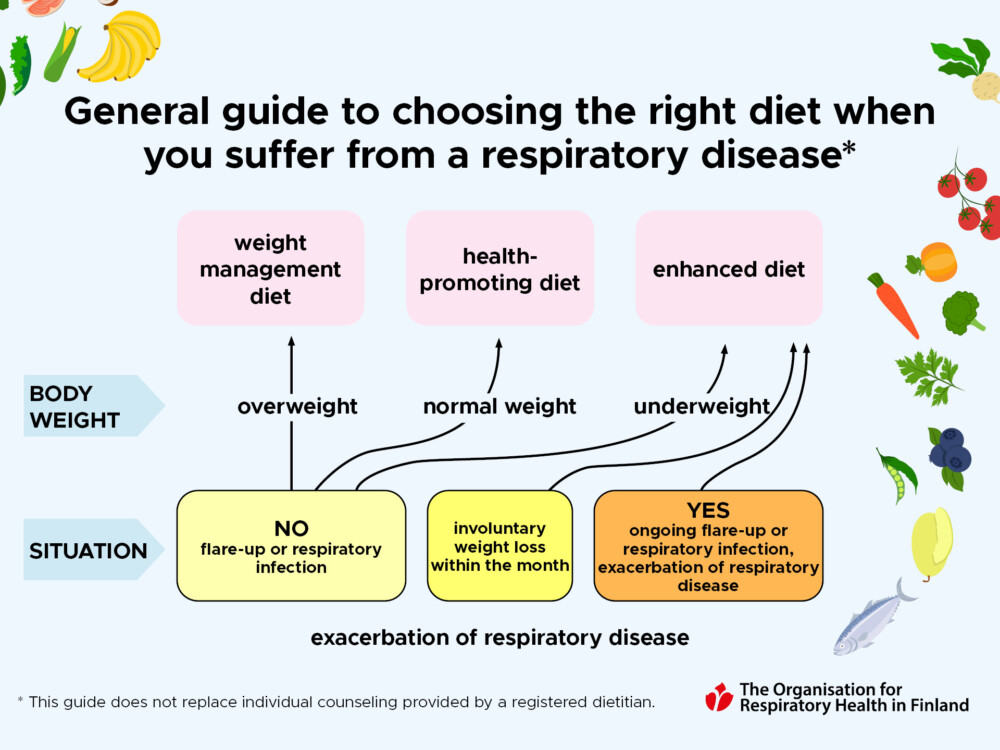Healthy nutrition has an impact on well-being and symptoms in all people, including people with respiratory diseases. On these pages, you will find general information on nutrition and weight management and special instructions for people suffering from respiratory diseases at different weights.
The cornerstones of a good and healthy diet continue to be the plate model and the food pyramid.

The base layers of the food pyramid form the basis of the daily nutrition of people within the normal weight range. The higher you move up the pyramid, the less you should be eating those products. You should eat a varied diet every day. It’s all about the big picture: no single food item will make your diet good or bad by itself!
Hunger is a sign that your body needs energy. A regular meal schedule helps keep hunger and sugar cravings at bay. If you eat a hefty meal before going to bed, it can disturb your sleep because your body has a lot of food to digest.
In the plate model, you fill half of the plate with vegetables (such as salads, grated vegetables, cooked vegetable side dishes), a quarter with potatoes, wholegrain pasta, or other whole grain products, and a quarter with fish, legumes, vegetarian food containing seeds or nuts, eggs, or meat.
The plate model can also be applied to soups, stews, and vegetarian dishes. You can use it to estimate how many different components you should include in your meal.
The common recommendations for drinks to have with your meal are water, skimmed milk, and sour milk. You can complement the meal with whole grain bread, buttered with soft vegetable fat, and have berries or fruits for dessert.

